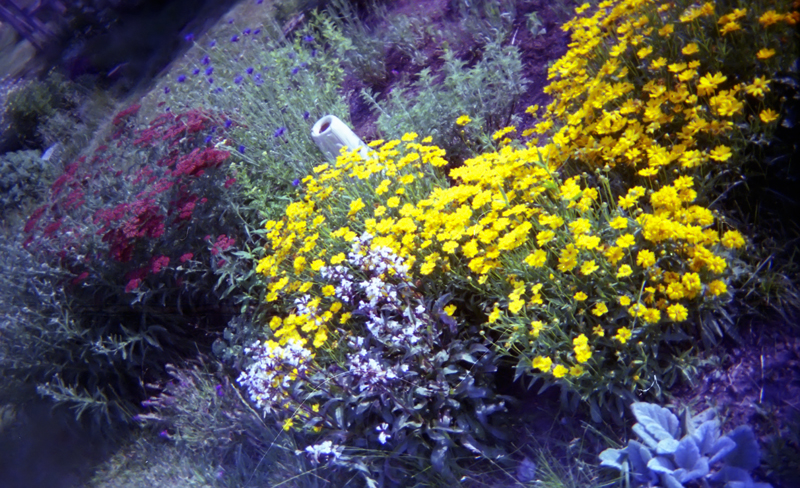Thursday, February 28, 2013
Pentax Spotmatic F
The Pentax Spotmatic F is the last of the famous Spotmatic series. It also was the first in the series to have open-aperture metering. I found the one in the photo in an antique shop back in January for $17. It is in great shape. I am getting to where I am leaning toward only getting cameras that I see in person. While I have had good experiences most of the time getting cameras off places like Ebay, being able to examine the camera in person has increasing appeal for me. Also in a way it seems more fun to see what I can discover by chance rather than going online where I can find almost anything. I think that my finding of so many Pentax cameras locally in the past year has helped with this choice.
Other then the metering in usage the Spotmatic F is pretty much the same as the other Spotmatics. And to me at least the Spotmatic is one of the most pleasant cameras to handle and use. I believe it is one of the cameras that anyone who is into photography should experience at least once.
Details of the Pentax Spotmatic F
Pentax Spotmatic F SLR Completely Disassembled and Laid Out
Images with the SMC Takumar 1:1.8/55mm lens on HP5
Tuesday, February 26, 2013
Olympus OM-1
I think that the introduction of the Olympus OM-1 is one of those events for which you would have to have lived at the time to understand what a sensation it was. I can remember that all the photography magazines had articles raving about the Olympus OM-1. That Olympus had managed to build a quality system slr that was so compact did seem like a wonder. Still I was committed to Canon cameras at that time. And back in those days, unless you were rich, once you had started with one camera system it usually was best to put your money into expanding that system instead of trying out different cameras. Today however with many abandoning their film cameras it is affordable to try out almost any film camera that I was ever curious about. So when I recently saw the Olympus OM-1 in the photo for $10 in an antique store I felt pretty lucky. It is a little beat up with a dented filter ring and another dent in the upper body. Still it works as it should for taking pictures.
Since the Olympus OM-1 is such an iconic camera I imagine must people with an interest in film photography are familiar with its basic features. It may seem funny, however one thing that stood out for me was the film rewind. Instead of the little button on the bottom of the camera there is a switch on the front. If you look at the picture you can see it where the R and the red dot are. Anyway I like this a lot better than the sometimes hard to push button on the bottom of the camera. And overall I can see why so many people were crazy about this camera. For me using the Olympus OM-1 was as pleasant a user experience as I have had with a camera.
If you want more info about the OM-1 I think this site covers it pretty well.
Lastly a few images with the Zuiko 50mm f/1.8 lens.
Friday, February 22, 2013
Kalimar Precision Zoom
Kalimar got its start in the 1950's importing Aires 35 cameras from Japan for sale in the US. Eventually Kalimar would be a distributor for cameras and accessories from most of the camera making world, until it was bought out by Tiffen in 1999. At some point Kalimar put its name on the Kalimar Precision Zoom. The Kalimar Precision Zoom is unusual in that it is the only cheap plastic camera that I have seen with a zoom lens. I would guess it was made in the 1990's since that is when a zoom lens became the standard lens for many cameras. Other than its zoom lens the Kalimar Precision Zoom is a standard toy camera. It has one shutter speed and one aperture. It doesn't need a battery unless you want to use the flash. The Precision Zoom does seem to be more solidly built than most toy cameras. It also fits nicely into my hands. Below are a few sample images so you can judge the value of the camera as a picture taker for yourself. All were taken with HP5 developed in Xtol.
Wednesday, February 20, 2013
Prices for 35mm cameras under $100 in 1957
I found the list below in the March 1957 edition of Popular Photography. It is the most complete list in one place of prices for 35mm cameras from the 1950's that I have seen. According to the Inflation Calculator you can multiply the 1957 price by 8 to get an idea of what the camera would cost in 2012 dollars.
Thursday, February 14, 2013
Vivitar cv35
The Vivitar cv35 was sold in a retail pack for $12 in the late 1990's. Along with the camera you got a roll of film and an AA battery for the flash. The Vivitar cv35 has a translucent body and came in a variety of colors. It further set itself apart by having a 2 element 27mm lens. Naturally, I could not pass this camera up. Although I don't remember where I got it from.
Last summer I ran a roll of Fuji 200 through the Vivitar cv35. Nothing about the results made me in a hurry to stick in another roll. It doesn't hold the same place in my esteem as my other red vivitar, the Vivitar PS 55s. Still for its red color and translucence it earns a high place in my collection of Vivitar point and shoots. Vivitar cv35 gallery.
Last summer I ran a roll of Fuji 200 through the Vivitar cv35. Nothing about the results made me in a hurry to stick in another roll. It doesn't hold the same place in my esteem as my other red vivitar, the Vivitar PS 55s. Still for its red color and translucence it earns a high place in my collection of Vivitar point and shoots. Vivitar cv35 gallery.
Monday, February 11, 2013
Suprema Mini GTG
I am not sure if it is some kind of illness, however I do have the habit of buying these cheap plastic cameras when I see one at a garage sale or thrift store. Then I start to wonder what kind of pictures it will take and I usually end up taking a roll or two before the camera comes to rest in a box with my other plastic cameras. Of course there are so many of these cameras that I do have to have some limitations. One thing I look for is a wider than normal lens. The Suprema Mini GTG made the cut with a 28mm lens. I also look for colors other then the standard ones. So being blue helped the Suprema. Probably my firmest limit is that I won't pay more than $2 for one of these cameras. And the Suprema cost $1.
The Surprema Mini GTG has only one aperture f/8, and one shutter speed of 1/125. It doesn't need batteries unless you want to use the flash. The lens seems to be soft all over.
Occasionally there are light leaks and there almost always is some vignetting. So the Surpema Mini GTG does live up to toy camera standards.
I used Kodak Max 400 which had expired in 2005 for these pictures. Probably this image showed the most color shift. I tend to enjoy some of the unexpected images that I get from the cheap cameras and expired film.
If you have made it this far then maybe you would like to see some more images from the Suprema Mini GTG. If so here is the gallery
.
Thursday, February 7, 2013
Sawyers Nomad 127
Sawyers is most most famous as the maker of the Viewmaster. In 1957 they made at least a couple of cameras: the Sawyers Nomad 127 and the Sawyers Nomad 620. Both of the Nomads are the same in features, differing only in the film size that they use. The 127 pictured here obviously uses 127 film. Fortunately or maybe unfortunately if you are offended by sprocket holes, the Nomad 127 has a large enough film chamber to accommodate a 35mm cartridge. The Nomad took 8 4 x 6.5 cm images when using 127 film. So it gives a pretty wide image on 35. The camera is very simple. Just one aperture f/8, and a shutter speed of probably 1/60.
I do have the Sawyers Nomad 127 mostly because of its 1950's looks. Still it was fun to let it make some pictures again.
If you hate the sprocket holes on some images it is easy to use content aware fill in Photoshop to get rid of them.
Tuesday, February 5, 2013
Vivitar IC 101
The Vivitar IC 101 seems to have achieved somewhat of a minor cult status. Its most notable feature is a 28mm lens and a permanently fixed panoramic mask. This masks yields a 13x36mm image. The aperture is f/8 and the shutter speed is 1/125. For me this camera turned up in a garage sale for $1. I didn't know its cult statue then. I just have a habit of picking up Vivitar cameras if they are very cheap. So last summer I ran some expired Kodak Max 400, that I also found at a garage sale, through it. Some of the pictures I kinda like, however it will probably be a while if ever before I join the fan base of this camera. If I do I will probably remove the masks.
Subscribe to:
Posts (Atom)

































